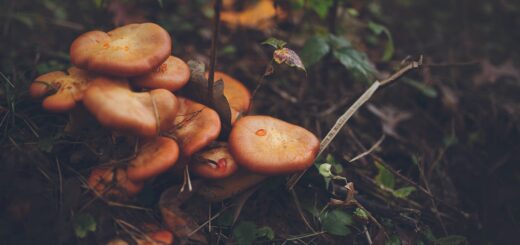Ayahuasca: The Ancient Shamanic Brew Unveiling Spiritual Journeys
Revered and utilised across millennia by indigenous communities of the South American Amazon rainforest, the enigmatic Ayahuasca brew is a cornerstone of shamanism. Combining spiritual lore with botanical science, Ayahuasca invites individuals to embark on profound spiritual journeys, often resulting in transformative personal healing and enhanced self-awareness.
Derived from the Quechua words meaning “vine of the spirit” or “vine of the dead,” Ayahuasca refers to a psychoactive brew containing Dimethyltryptamine (DMT) and Monoamine Oxidase (MAO) inhibitors. These components are found within two primary ingredients: the vine Banisteriopsis caapi and the perennial shrub Psychotria viridis. While the caapi vine contains harmala alkaloids that act as MAO inhibitors, the leaves of the Psychotria viridis are rich in DMT, a potent compound known for inducing intense psychedelic experiences.
The crafting of this medicine is deeply rooted in indigenous traditions, with the process carrying significant spiritual connotations. Ayahuasca shamans, or “Ayahuasqueros,” serve as the stewards for this ancient artistry, guiding the preparation and administration of the brew. Harnessing their extensive knowledge of the rainforest’s ecology, these shamans respect and revere the plants – understanding them as embodiments of sacred, spiritual entities. It’s the combination of these components that formulate Ayahuasca’s unique psychoactive properties.
Ayahuasca is primarily utilized in healing ceremonies. Under the guidance of a shaman, participants consume the brew in a controlled, ceremonial environment that accommodates the intense, hours-long journey which follows. Fundamental to these healing ceremonies is the belief in Ayahuasca’s ability to facilitate deep introspective journeys. Reportedly, participants often encounter profound insights about themselves, nature, and the cosmos, experiencing visionary states that offer therapeutic revelations and expulsion of negative energy.
Scientific studies, while limited, have begun to provide a tangible basis for some of the long-held indigenous beliefs about Ayahuasca’s healing potential. Some research suggests that Ayahuasca may have neurobiological effects that could aid in the treatment of depression and addiction disorders. According to a 2016 study, Ayahuasca appears to modulate brain activity in regions associated with emotional memory and social interaction, including the amygdala and the insular cortex.
Remarking on the brew’s influence, best-selling author and ethnobotanist Wade Davis noted in his book “One River”, “Ayahuasca is not a pathway to the godhead. It is a tool for the human mind to understand itself.”
Despite its deeply spiritual significance and potential medicinal roles, Ayahuasca isn’t without controversy. Its consumption often results in physical discomfort, including nausea and vomiting often described symbolically as the “purging” of negative energies. Moreover, the global interest in Ayahuasca has led to an upsurge in “Ayahuasca tourism” in South America, with concerns about cultural appropriation and exploitation rising alongside it.
In countries like the U.S, Ayahuasca remains legally complex due to its DMT content, classified as a Schedule I controlled substance. However, certain religious groups have been granted legal protection to use the brew in their ceremonies, underlining both the cultural importance of Ayahuasca and the debates surrounding its use.
With increased global attention, research, and dialogue, understanding of Ayahuasca continues to deepen. Ensuring respectful, knowledgeable handling of this potent brew remains paramount. As we seek to comprehend Ayahuasca’s effects and potential benefits, we find ourselves stepping into an ancient world of shamanic wisdom and plant-based teachings – inviting a deep respect for both the natural world and the cultural traditions rooted within it.

